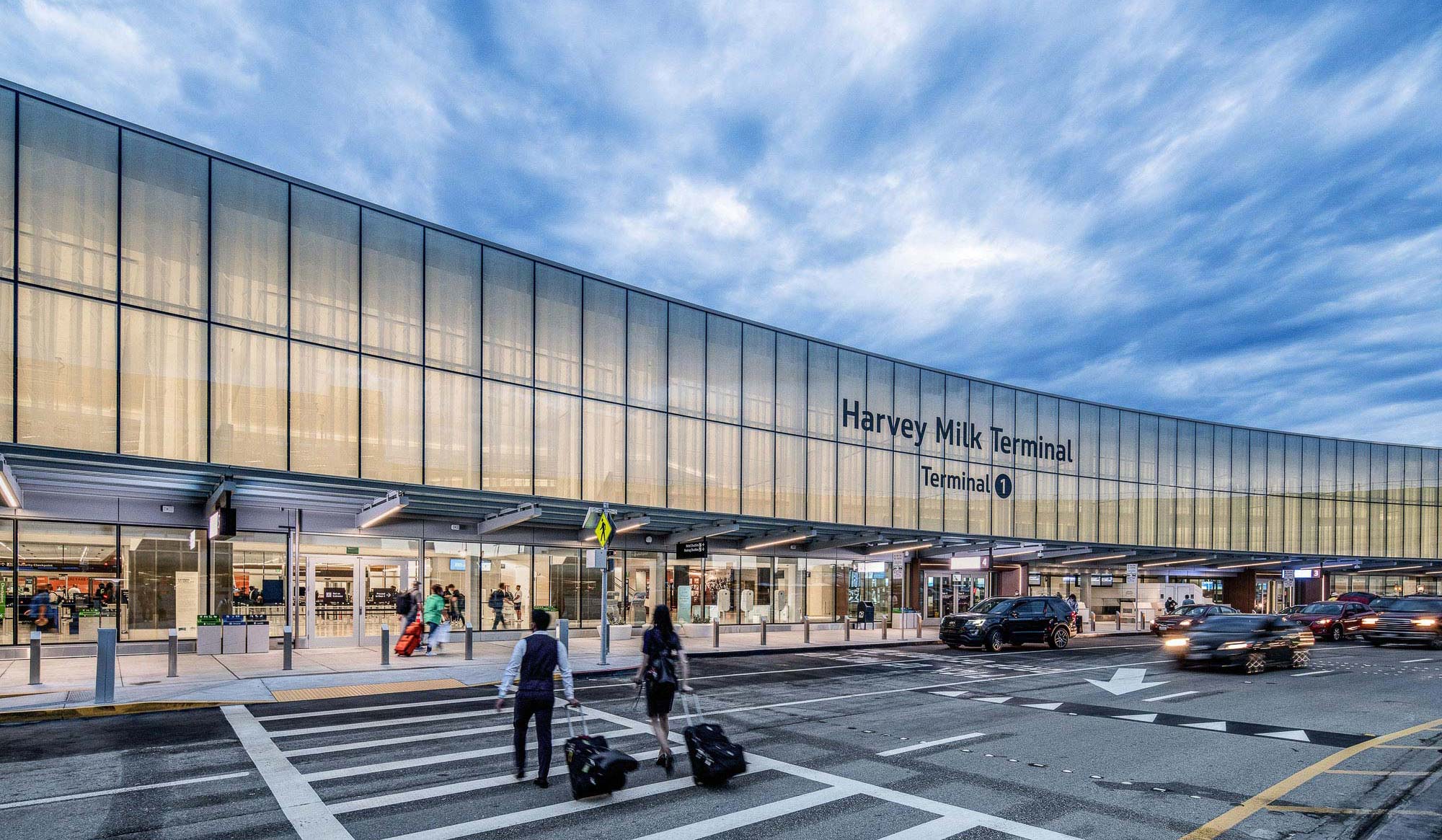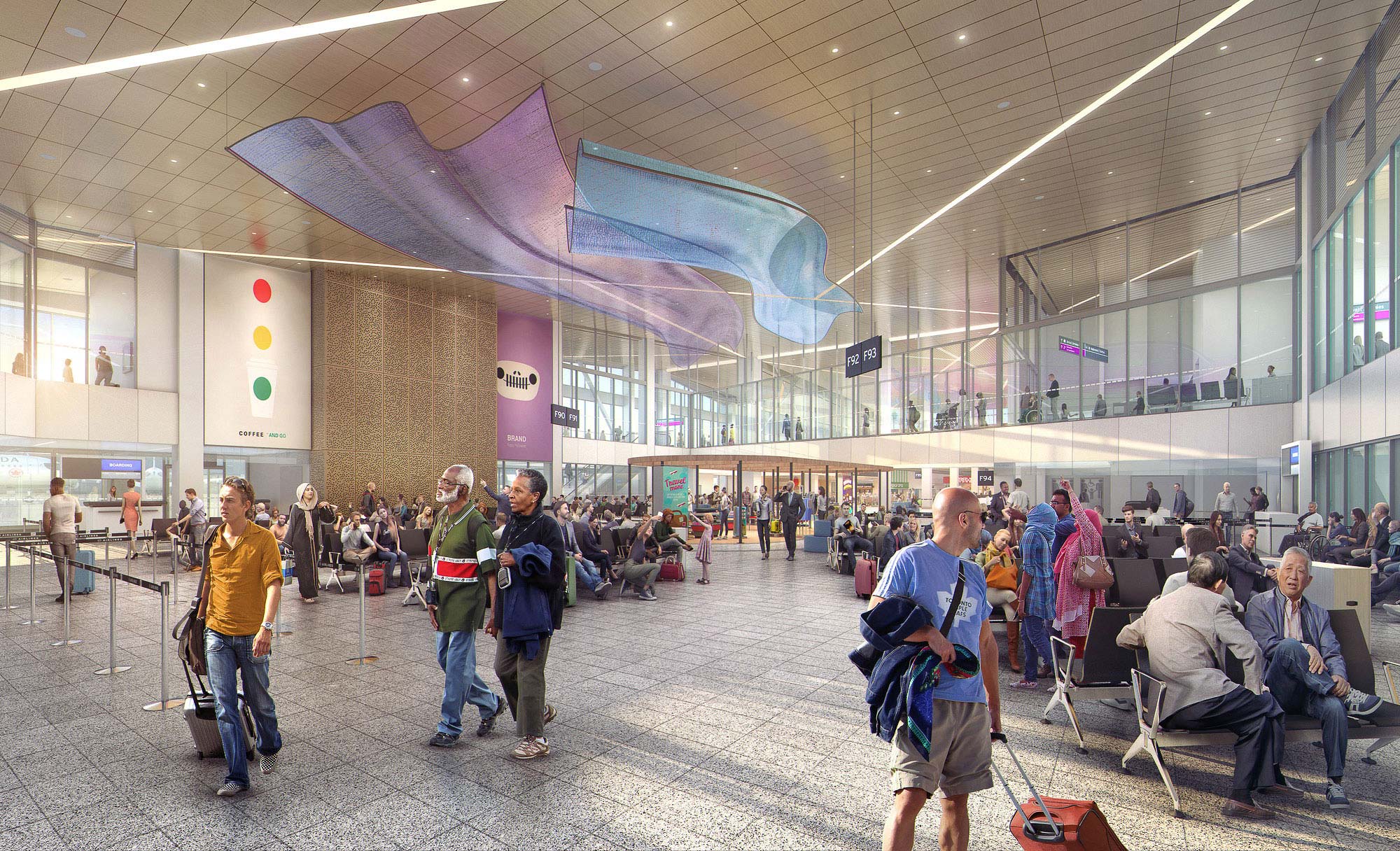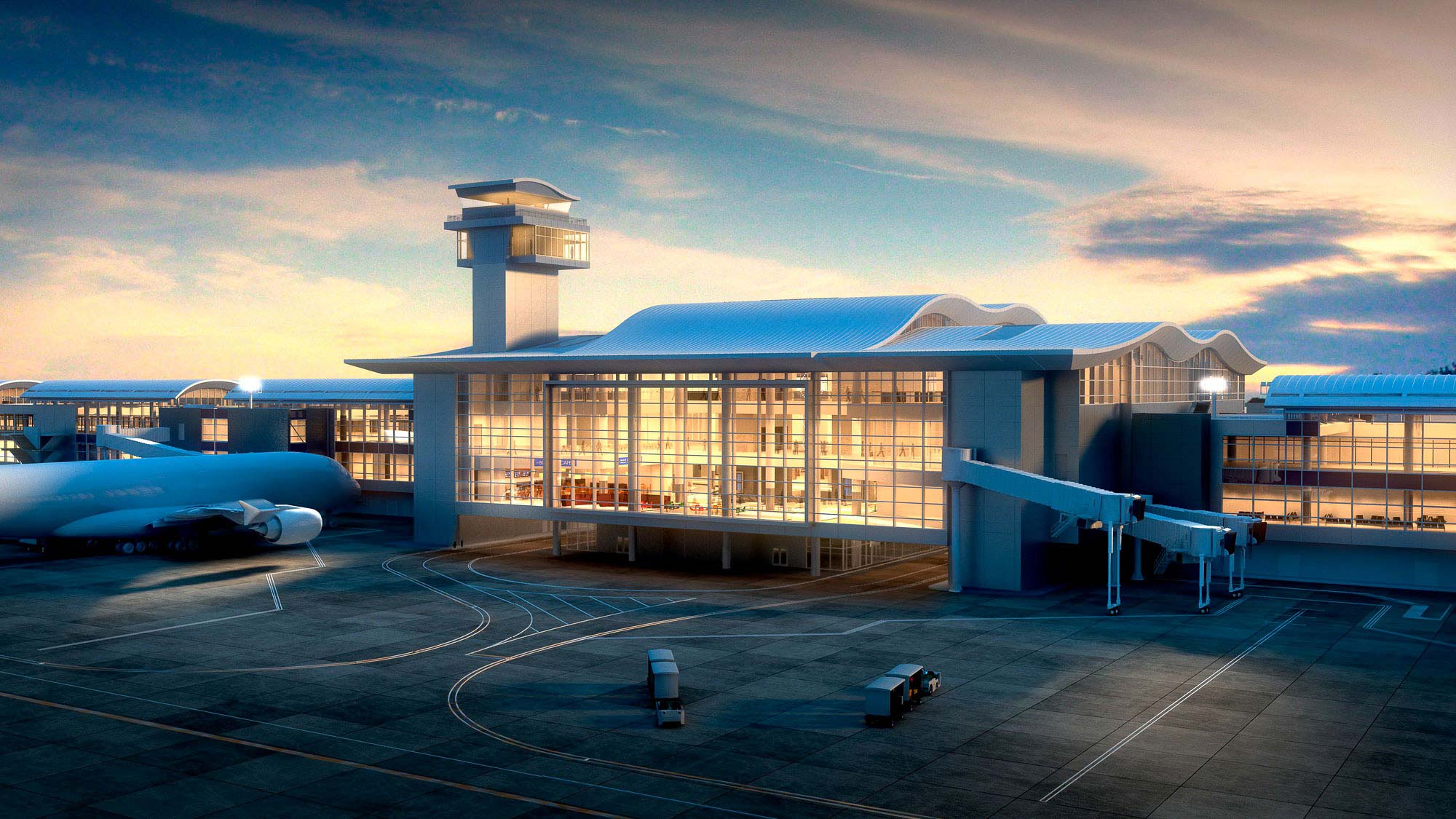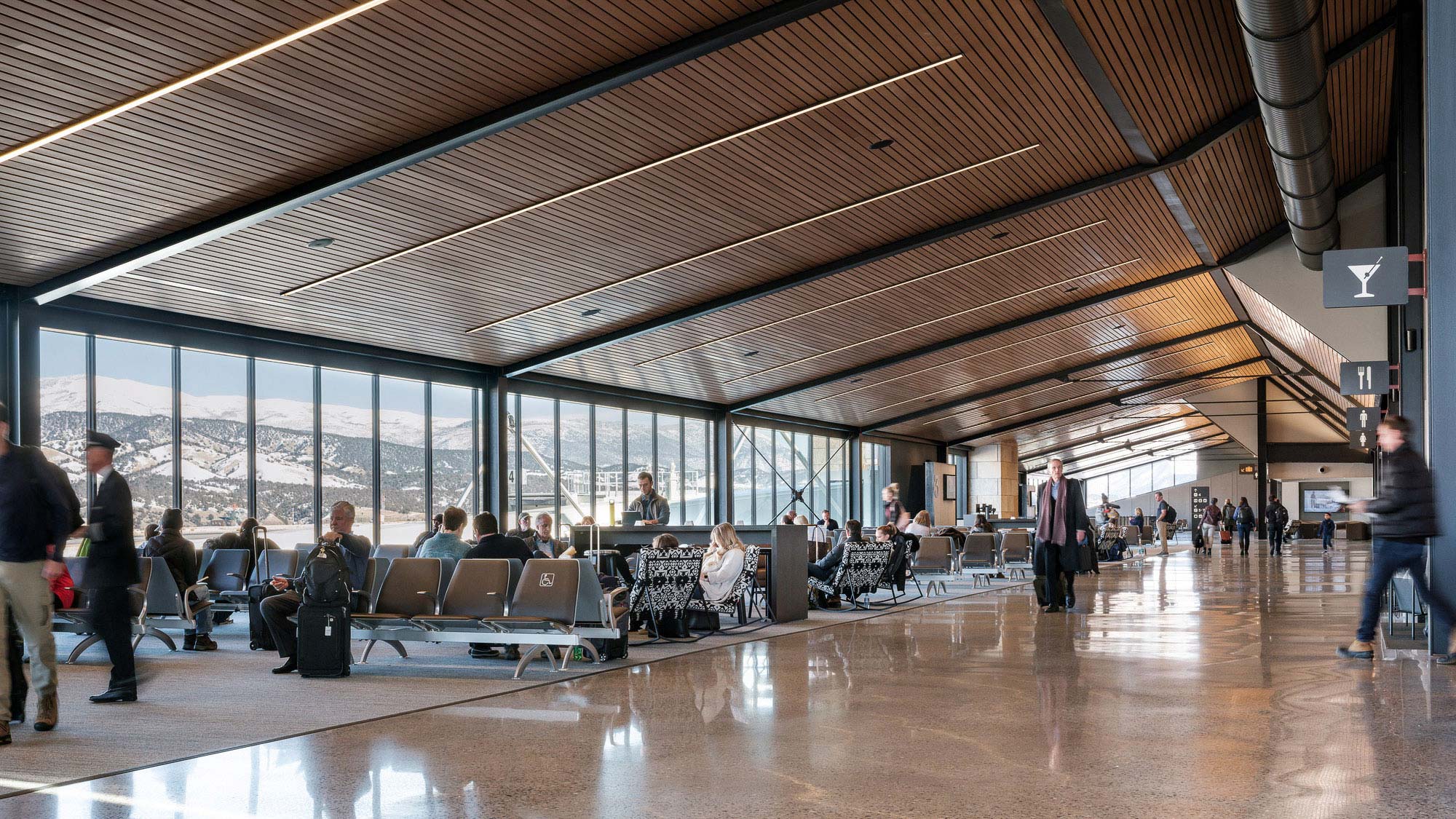



A reimagined concourse accommodates current and future enplanements, while enhancing the overall passenger experience. The concourse design reflects the region’s aesthetic and enhances its operational function through peak tourism seasons. One of the key strategies to right-sizing the concourse was accomplished through the creation of “blended space,” which includes concession dining, casual seating, a long banquette, a bar, and high-top tables. The airport was named a Prix Versailles 2020 winner in the Interior Airports category.
Passenger traffic levels are likely to lag for several years, which means it’s the perfect time for airports to prepare for future demands. These four key strategies should guide the way:
Explore Design Strategies for a Post‑COVID World

Download Gensler Design Forecast 2021 (PDF)